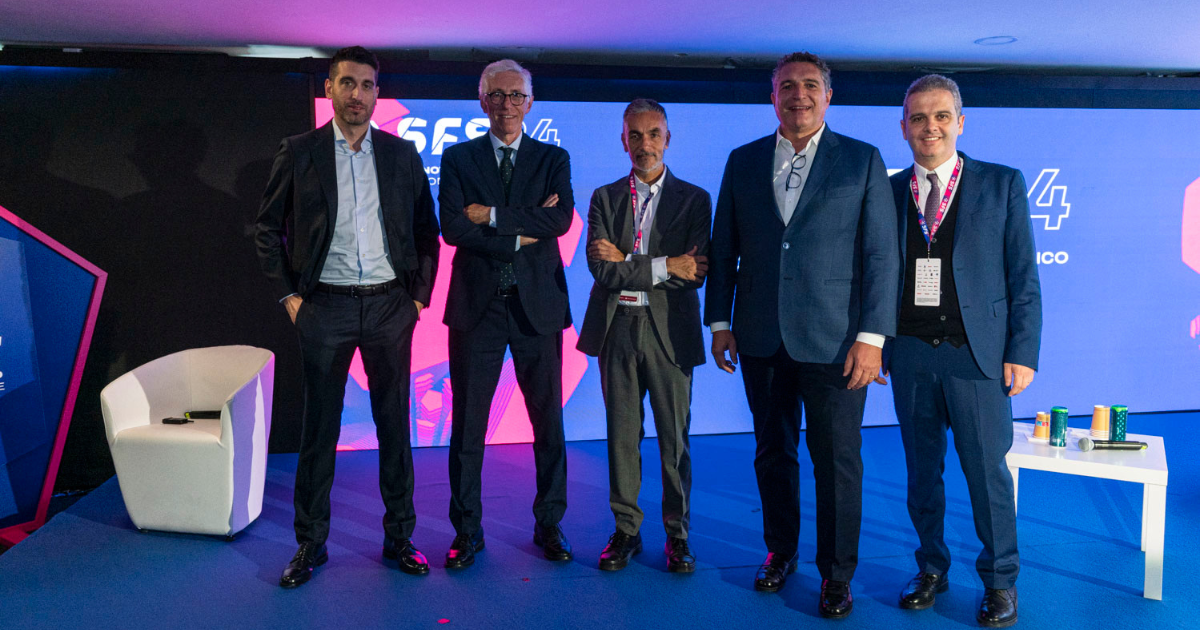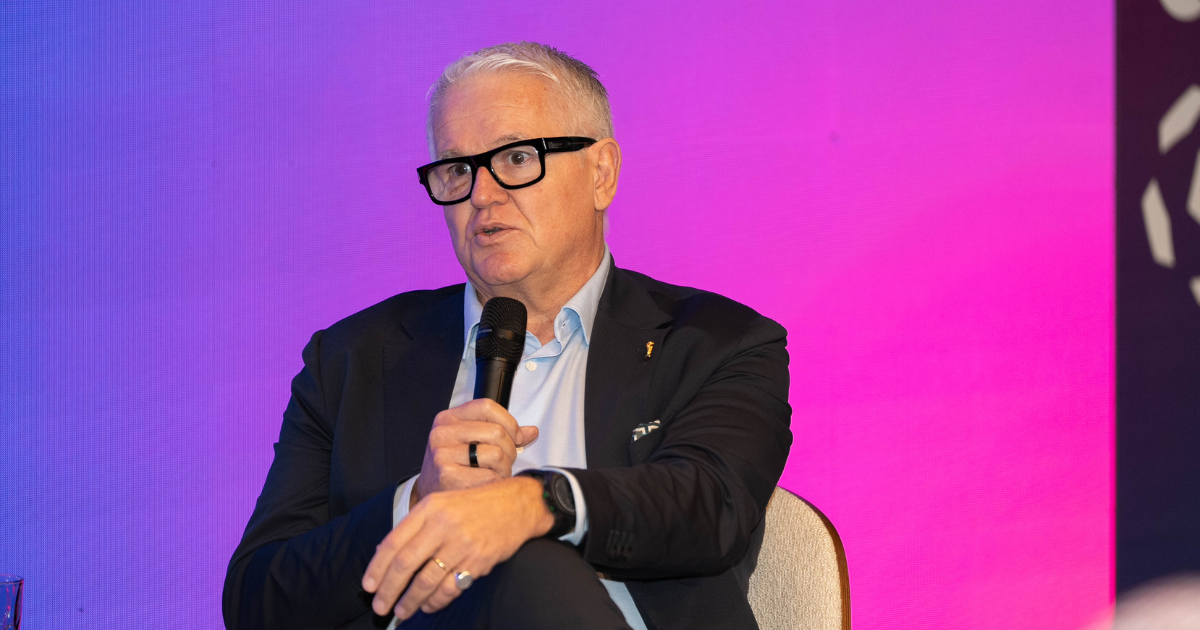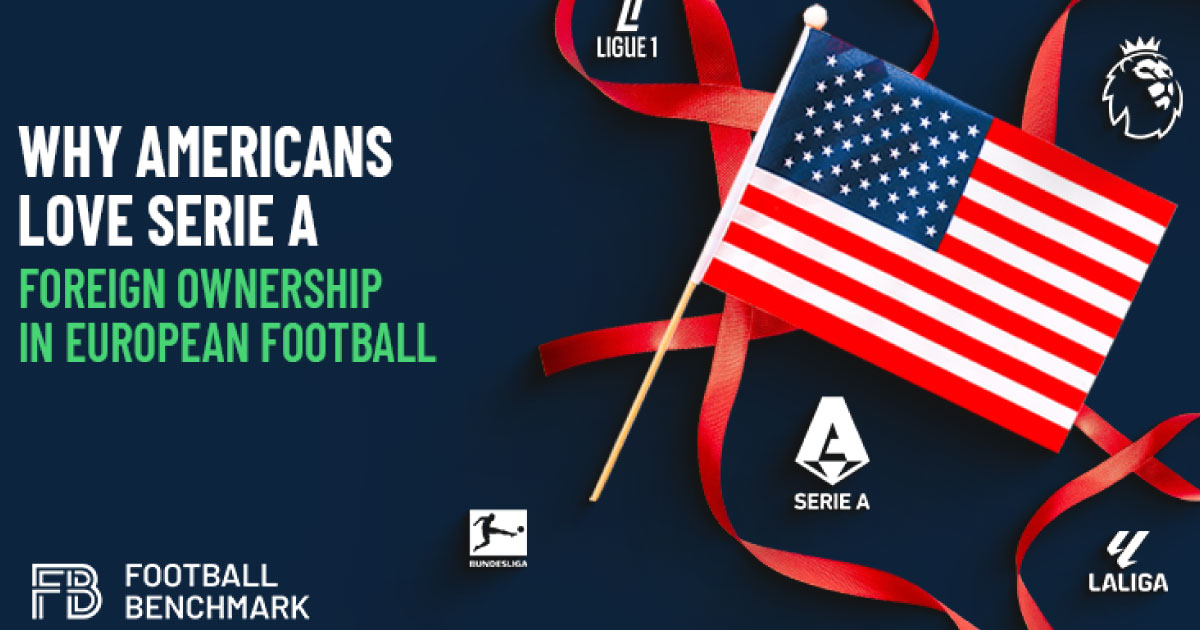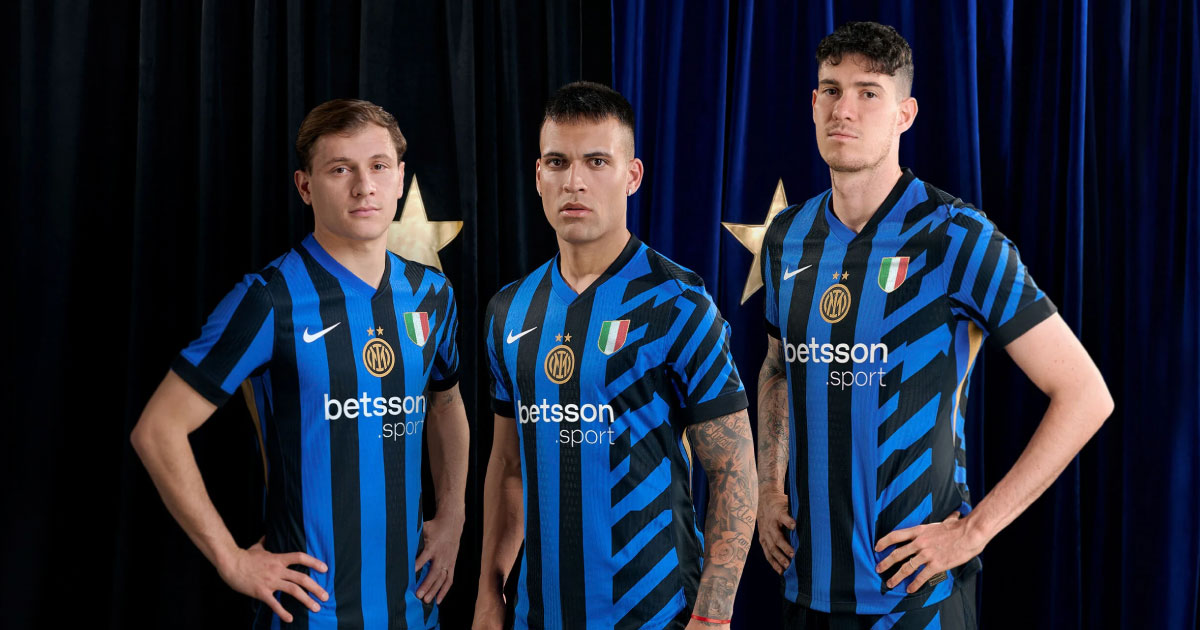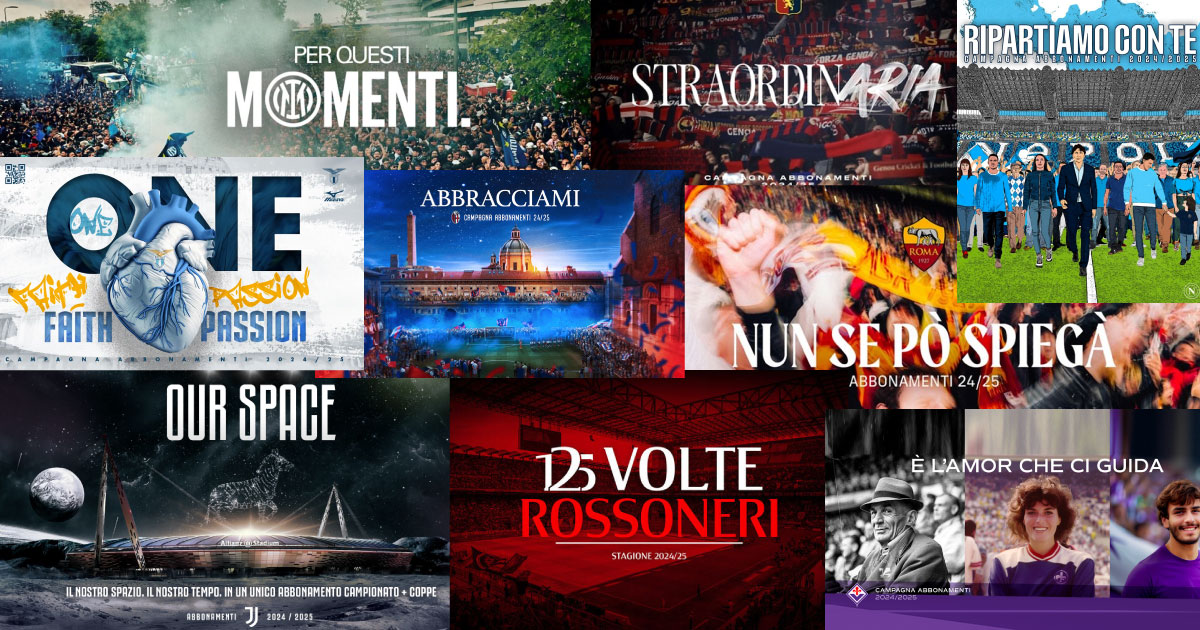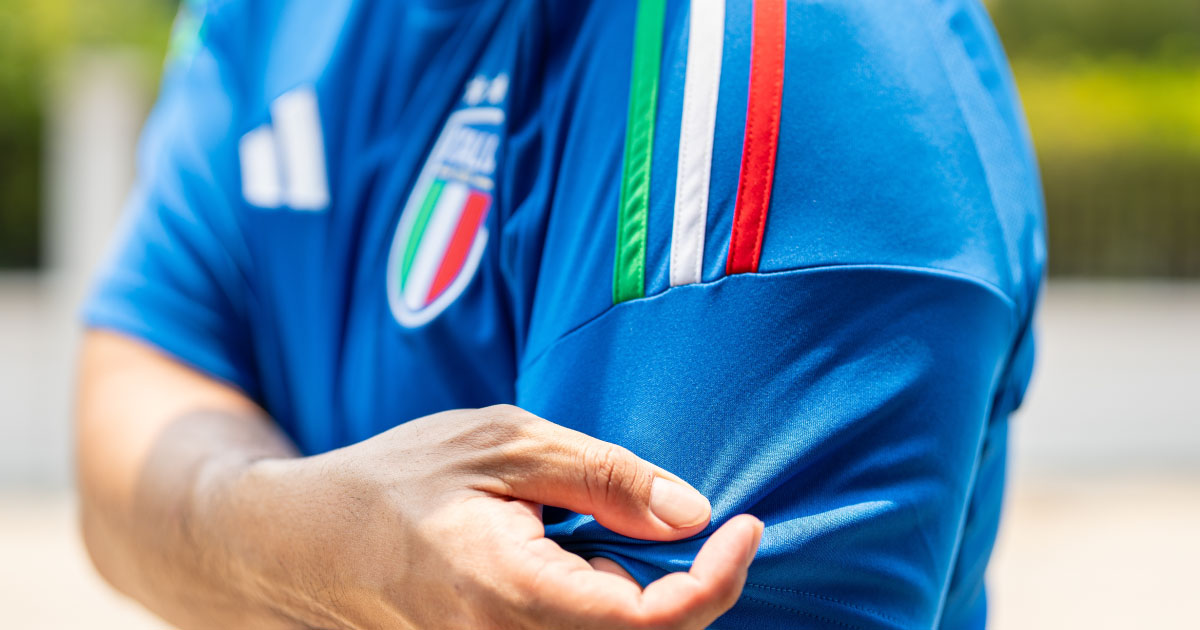During SFS24, Lorenzo Dallari (Editorial & Social Director of Lega Serie A) and Luigi De Siervo (CEO of Lega Serie A) presented the upcoming edition of the Serie A Festival, an event designed to bring Italy’s top football league closer to the general public. The festival offers a space for dialogue, discussion, and the celebration of football in all its facets.
The event, created with the goal of showcasing Serie A in an innovative and accessible way, will take place from June 6 to 8, 2025, in Parma, a city with a rich football and cultural tradition. The first edition, held in 2024, marked a significant step in engaging not only industry professionals but also the wider public. It is not merely a gathering for insiders but rather an opportunity to involve fans and enthusiasts through talks, panels, and meetings with key figures from the football and media industries.
Dallari emphasized that the event aims to “express football passion in a 360-degree approach”, exploring lesser-known aspects such as business and digital communication. He also highlighted the social media strategy adopted during the first edition, which generated 10 million views across more than 70 pieces of content published on major platforms, reaching nearly 5 million users.
De Siervo further reinforced the event’s vision, stating that its goal is to “keep football at the center while avoiding self-referential narratives and embracing cross-industry influences as much as possible”.
The 2025 edition will feature a special focus on sports cinematography, along with a host of exciting new elements that will make the experience even more engaging. The selected venues – Laboratorio Aperto di San Paolo, Galleria San Ludovico, and the Ridotto del Teatro Regio – are all located in the heart of Parma, ensuring logistical efficiency and greater accessibility for attendees.
For the first time, the Festival will expand into Parma’s central square, increasing interaction with the city and creating a more inclusive environment. The event will welcome authorities, institutions, and high-profile guests, further solidifying its importance in the Italian football and cultural landscape. An additional engagement initiative will be the creation of a Fan Zone in the city center, designed to bring the audience closer to the event and enhance the collective storytelling around football—our national popular narrative.
All panels will be broadcast live on Serie A’s official channels, as well as on Radio TV Serie A with RDS. One of the major innovations of the 2025 edition will be the open radio studio, which, as Dallari explained, “will bring broadcasts among the people, breaking down barriers between media and the public”.
One of the most anticipated moments will be the celebratory match organized by “Operazione Nostalgia”, scheduled for June 8 at the Tardini Stadium in Parma. The event will feature legendary former players who have left a mark on Serie A history, both Italian and international, giving fans an emotional and nostalgic experience.
The growth of the Serie A Festival is also driven by strategic partnerships with key industry players. GoProject and SFS play a crucial role in this expansion, as also confirmed by De Siervo: “We have chosen SFS as the event around which to build relationships for the business side of the Festival”, reinforcing the connection between football, innovation, and quality networking opportunities.
There are many exciting projects in the pipeline, as further confirmed by Gianfilippo Valentini and Massimo Tucci, CEO and Director of SFS, respectively. In the meantime, they have opened registrations, inviting all interested participants to sign up through this form.
With an ever-expanding offering and a constantly evolving format, the Serie A Festival is cementing itself as a must-attend event for those who want to experience football from a new, more inclusive, and immersive perspective. Parma is once again set to become the capital of football, welcoming fans, professionals, and enthusiasts for a unique and unforgettable experience.
Exclusive SFS24: the Serie A festival presented
During SFS24, Lorenzo Dallari (Editorial & Social Director of Lega Serie A) and Luigi De Siervo (CEO of Lega Serie A) presented the upcoming edition of the Serie A Festival, an event designed to bring Italy’s top football league closer to the general public. The festival offers a space for dialogue, discussion, and the celebration of football in all its facets. The event, created with the goal of showcasing Serie A in an innovative and accessible way, will take place from
SFS Saudi edition: Football, Investments and new global visions
At the SFS Saudi Edition, within a framework of internationalization and enhancement of the Serie A product, globally renowned guests from the football industry participated. Carlo Baldocci, the Italian ambassador to Saudi Arabia, Ezio Maria Simonelli, the newly elected president of the Serie A League, and Abdulrahman Justaniah, Deputy Minister for Strategic Planning and Investments at the Saudi Ministry of Sports, opened the scheduled panels with institutional greetings addressed to the audience and those streaming the event on the Summit's
Why Americans love Serie A – Foreign ownership in European football
In recent years, European football has experienced a remarkable transformation in club ownership, driven by a range of motivations. For some, football clubs represent prestigious assets, while others are drawn by the opportunity to unlock untapped revenue potential within the sport. Key insights: In Serie A, nine clubs are owned by North American investors, while the English Premier League surpasses that figure, with ten clubs under North American control. In recent years, Italy’s top league has become a favored destination for American investors,
The evolution of football jersey marketing: from sportswear to fashion icon
In recent years, the marketing related to football team jerseys has gained increasing importance, becoming a true cultural phenomenon. It is no longer just a simple piece of clothing but a symbol of belonging and identity for millions of fans around the world. Today, the design of jerseys is meticulously crafted, with colors, logos, and graphics that tell the story and values of the club, strengthening the emotional bond with the fans. Football teams are increasingly collaborating with fashion brands and internationally renowned designers to create
Season Ticket Campaing: when the passion meets commercial
During this time of the year without live football, following the sport we love might seem dull. However, especially for those viewing football through the eyes of insiders, this period becomes very interesting. Between the transfer market, confirmed and newly announced marketing partnerships, social media presentations of new signings, and creative season ticket campaigns, June and July become special months without club football. Today, we focus on season ticket campaigns. This summer, more than others, clubs seem to have returned to
A new digital blue era has begun with Vivo Azzurro TV
In the midst of the last two seasons, during which Serie A has frequently questioned the utility and feasibility of a proprietary platform to broadcast video content, matches, and live events, the FIGC has forged ahead by launching Vivo Azzurro TV, the perfect hybrid between an OTT service and an official app useful for fan engagement activities. After various rumors among industry insiders about the creation of a similar project, on May 14, the FIGC finally launched the OTT project with an event



